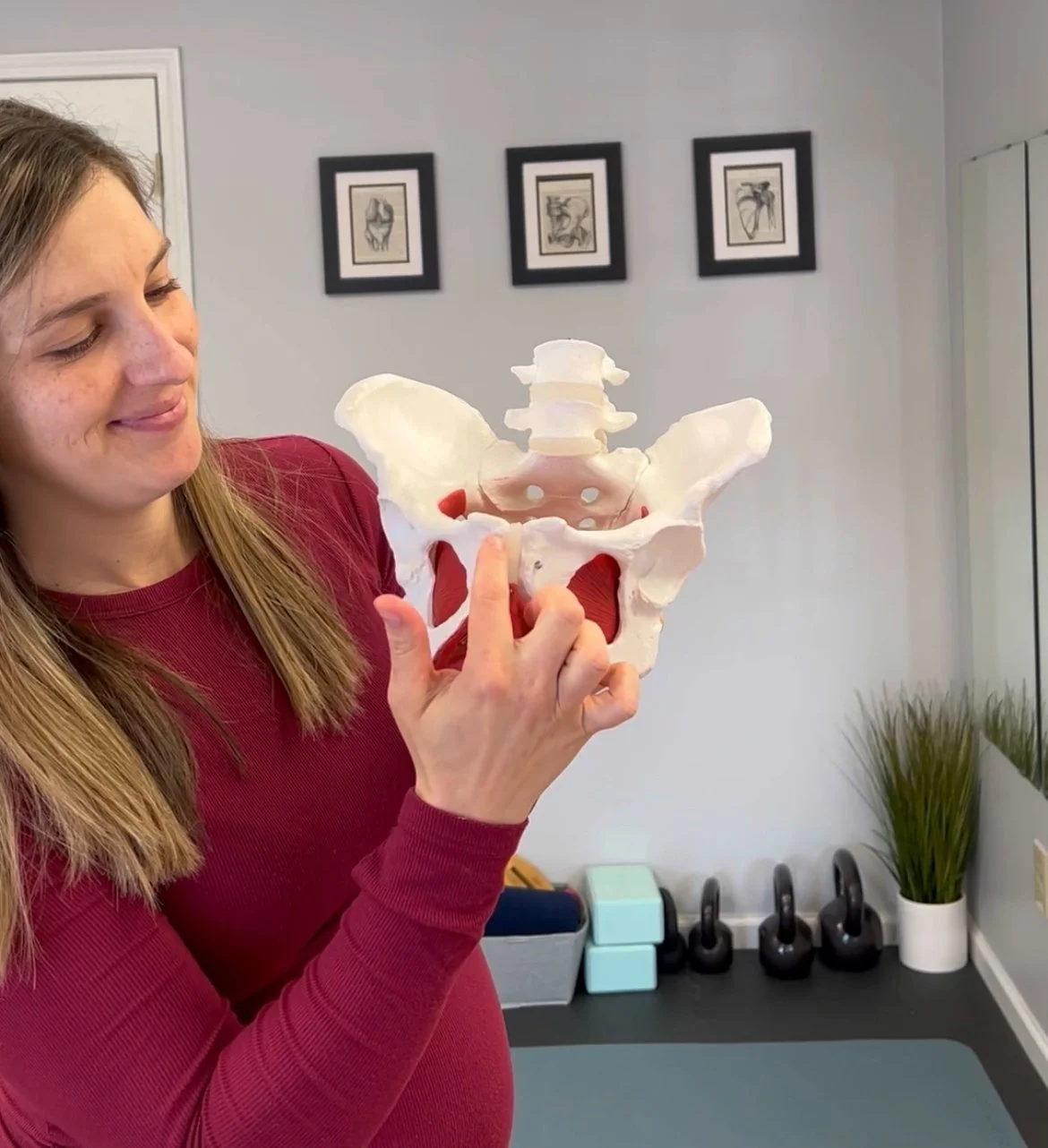Symphysis Pubis Dysfunction (SPD) during Pregnancy: what it is and what to do about it
Symphysis pubis dysfunction is common during pregnancy, but it is not something you have to suffer through! In this blog post I’m going to explain what symphysis pubis dysfunction is, and what you can do about it during pregnancy.
What is symphysis pubis dysfunction?
First, a quick anatomy lesson! The pubic symphysis is a joint in the front (anterior) part of the pelvis. It connects the left and right side of the pelvis, and is made up of a fibrocartilaginous disc, ligaments, and soft tissue.
The pubic symphysis plays a role in absorbing and translating forces. During pregnancy, it can become a site of pain and discomfort due to an increase in mobility of the joint (that the brain perceives as a much larger increase in mobility than what it actually is!). There is also increased stress on the joint as the uterus and baby grow throughout pregnancy.
Symptoms of symphysis pubis dysfunction during pregnancy include:
1) A feeling of pain or instability in the front of the pelvis, including shooting pains (“lightening crotch”), stabbing, grinding, or burning.
2) Pain with transitions such as getting into/out of a car and rolling in bed.
3) Activities on one leg like step ups or stairs, or exercises that strain the pubic symphysis like lunges, deep squats, or sumo squats.
4) Pain that radiates to the back, down the legs, into the abdomen, or into the groin.
What to do if you have pubis symphysis dysfunction during pregnancy
Do the symptoms above sound familiar? Here is what you can do to manage and reduce SPD during pregnancy.
1) Activity modification. Sleeping with a pillow between your knees, rolling with your knees together, and getting in/out of bed and in/out of your car keeping your knees together can all reduce strain on the joint and decrease pain. Think of it like hitting a sore thumb with a hammer - if you keep irritating the joint, it isn’t going to feel better. Modifying activities that aggravate the joint during pregnancy can be very helpful to reduce pain.
2) Keep moving. Activities and exercises that don’t cause pain are all completely fine to continue doing! Exercise has been shown to be beneficial during pregnancy, so keep doing what you can.
3) Do exercises to reduce SPD. Strengthening your core and hip muscles, doing gentle pain free ball squeezes (and any other hip adductor exercises you can tolerate without pain), and other pelvic stability exercises that don’t cause pain can all help to reduce SPD.
4) Wear an SI belt. SI joint belts help provide external cueing and stability to the pelvis and can help to reduce pregnancy related pelvic girdle pain and SPD. I always recommend only wearing belts when you are up moving around!
5) See a pelvic floor therapist. There are some manual therapy techniques that can help reduce SPD, and a pelvic floor therapist can also help you figure out what exercises are most effective for you. (We work with pregnant patients in person in Collierville, TN and virtually wherever you are!).
If you’re expecting and experiencing symphysis pubis dysfunction, I hope this information was helpful for you! You don’t need to suffer with SPD through your pregnancy. I also want to note that if you experience SPD postpartum, pelvic floor therapy can still help!
Questions? You can contact me at alexis@absolutekineticspt.com. If you want to learn more about working with us, click here. If you’re interested in learning more about our online self paced prenatal programs, check them out here.
Blog post written by Dr. Alexis Hutchison, PT, DPT, OCS
Next on your reading list - Pelvic Pain During Pregnancy: What is Normal?

